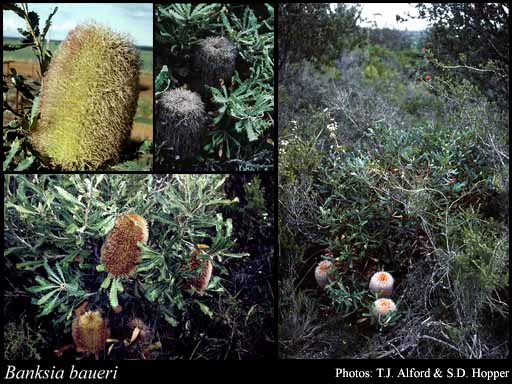- Reference
- Prodr. Suppl. 35 (1830)
- Conservation Code
- Not threatened
- Naturalised Status
- Native to Western Australia
- Name Status
- Current
Bushy, non-lignotuberous shrub, 0.5-2 m high. Fl. brown & yellow/cream-other, May to Oct. White or grey sand, lateritic gravel. Among quartzite rocks, granite, sandplains.

Scientific Description
Shrubs, 1.5-3 m high; branchlets hairy. Leaves petiolate, alternate, 85-170 mm long, 15-25 mm wide, hairy; petiole 15-20 mm long; lamina flat, more or less the same width throughout, once divided, pinnately divided, shallowly divided, teeth distinctly pointing towards the apex, with 14-23 lobes on each side, the margins flat. Inflorescences tomentose (with matted or tangled, soft, woolly hairs), cream, yellow or brown, hairy. Perianth 50-70 mm long, hairy, all over, limb apex pubescent (with soft, straight, erect hairs), awned; pistil 50-58 mm long, curved, style glabrous. Follicles hairy, tomentose (with matted or tangled, soft, woolly hairs), elliptic, 12-17 mm long. Flowers in May, June, July, August, September or October. Occurs in the South-west (SW) Botanical Province(s), in the Avon Wheatbelt (AW), Mallee (MAL) or Esperance Plains (ESP) IBRA subregion(s).
Distribution
- IBRA Regions
- Avon Wheatbelt, Esperance Plains, Mallee.
- IBRA Subregions
- Fitzgerald, Katanning, Recherche, Western Mallee.
- IMCRA Regions
- WA South Coast.
- Local Government Areas (LGAs)
- Albany, Brookton, Corrigin, Dumbleyung, Esperance, Kent, Kulin, Plantagenet, Ravensthorpe, Wickepin.